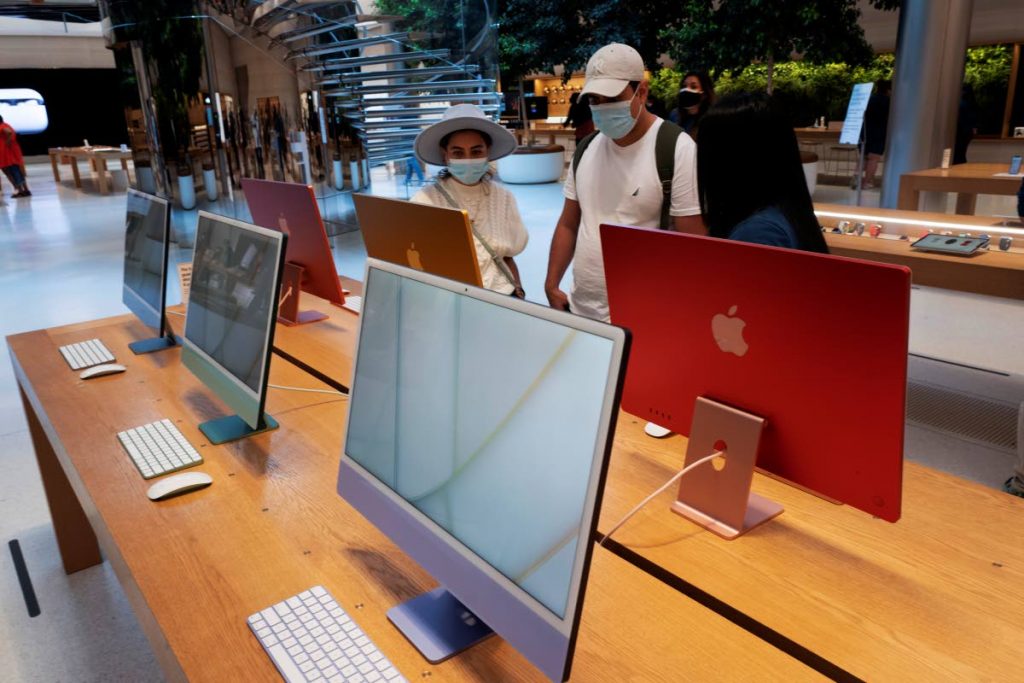Candy-coated computing

The last time the colour of a computer was a thing, Apple was reeling from crippling losses and Steve Jobs had just returned to the company. Mac clones were dying a swift but decisive death.
The year was 1998 and the first iMac was a bulbous, translucent "Bondi blue" device that dumped serial ports for USB, floppy disks for CD-ROM and ushered in an era of bright colourful see-through plastic products.
Apple eventually retreated from the style, probably recognising that it had passed its sell-by date and introduced titanium, then milled aluminium as new case materials.
Abandoning vividly colourful plastic was a good move, not just stylistically but also for the environment. Aluminium is almost infinitely recyclable and users get a much tougher shell for their Macbooks and iMacs.
For almost a decade, colour receded from the design rooms at Cupertino in favour of a silvery, silky finish that was at once professional and chic.
That finish is achieved by anodising, an electrolytic process that oxidises the surface of aluminium, creating an attractive and corrosion-resistant finish that becomes part of the metal. Once Apple began using anodised and milled aluminium as a casing material, it knew it wasn't the only colour available in the process.
It wouldn't be until colour began to appear on the plastic finishes of midrange iPhones and timidly on the iPad (Space Gray isn't really a colour), that the company began to incrementally reintroduce colour to its metal finishes.
But last month's announcement of iMacs was the first major colour splash since 2003. Apple will be making the new 24-inch iMac available in stores in four colour options – green, pink, blue, and silver – but if you buy online, you can choose one of the eye-searing yellow, orange and purple versions.
The Mac maker isn't the only one dipping aluminium to create tough and colourful consumer computers.
Samsung announced a range of colour options using anodised aluminium for PC users with its Galaxy Book range of computers at the end of April (https://bit.ly/2QMB17L).
Samsung's new laptop line wants to bridge the gap between what you can effectively do with a smartphone and a PC with a mix of style and utility.
That approach is different from previous efforts by Lenovo, Dell and HP to market computers with colour options that were just too Lego for real-world adult use.
The new computers from Apple and Samsung acknowledge that for many users under covid19, a computer isn't just something handed down by edict from the IT department, it's a multi-purpose appliance for work and entertainment that's the centrepiece of a home-office system.
What worked in a drab cubicle looks more like a carbuncle in a home, and the two companies aren't just acknowledging that, they are pushing beyond it to define a new selling point.
Does the device fit the user's decor and personal style as well as their practical needs?
It's a fundamental shift in the computing experience, a blurring of the computer-for-work and computer-at-home paradigm that's been the prevailing model.
From a technical perspective, the new colours on Apple's new iMacs aren't as big a deal as its use of the Apple Silicon M1 chip and the overdue addition of a proper 1080p camera, but in the home, where we live with these objects, appearance can parallel, if not trump utility.
With rainbow-coloured iMacs hitting store shelves last week, it's likely that the next step for Apple will be candy-coloured Macbooks, and for some, they can't come too soon.
Mark Lyndersay is the editor of technewstt.com. An expanded version of this can be found there.


Comments
"Candy-coated computing"